Gochujang is a thick, sweet, and spicy fermented condiment that hails from Korean cuisine. Made with chili peppers, glutinous rice, fermented soybeans, and salt, gochujang packs a flavorful umami punch. This versatile ingredient can transform your salads and vegetables when used in a salad dressing or marinade.
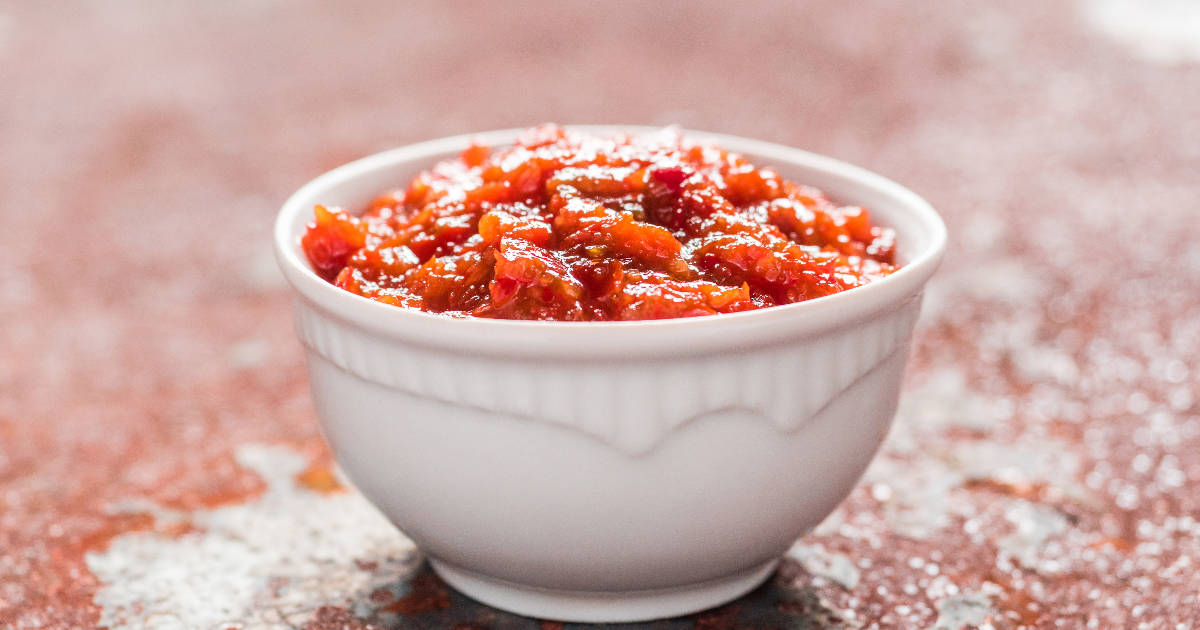
Keep reading to learn more about gochujang and find some easy recipes to make your own gochujang dressing at home.
What is Gochujang?
Gochujang is a thick, sticky paste with a sweet, salty, and spicy flavor profile. It has been a staple in Korean cooking for centuries, with records tracing it back to the 15th century.
Traditionally, gochujang was made by fermenting a mixture of chili peppers, glutinous rice, fermented soybeans, salt, and sometimes sweeteners like sugar or honey. This mixture would ferment in large earthen pots outdoors for months or even years!
These days, commercially made gochujang uses a faster fermentation process. It's readily available in the international aisle of many grocery stores or at an Asian specialty market. When shopping, look for gochujang made with just chili peppers, rice, soybeans, and salt without additives like MSG.
Since every brand of gochujang uses slightly different chilies and fermentation times, the heat level can vary. Start with a little gochujang when trying a new brand, as some can be quite spicy!
In Korean cooking, gochujang is used to add sweet heat to stews, marinades, dipping sauces, dressings, and more. A little goes a long way when using this powerful paste.
Gochujang Salad Dressing Recipes
Gochujang makes an amazing salad dressing ingredient. It adds sweetness, heat, savoriness, and color that instantly livens up any salad.
When making a gochujang dressing, balance out the heat by adding a touch of sweetness like honey or maple syrup. The acidity from rice vinegar, lemon juice, or orange juice also helps mellow the chili flavor. Round out the umami with toasted sesame oil and sesame seeds.
The resulting dressing pairs perfectly with sturdy greens like kale, cabbage, or romaine. It's also excellent on cold soba noodles and seafood salads.
Here are some easy gochujang dressing recipes to try:
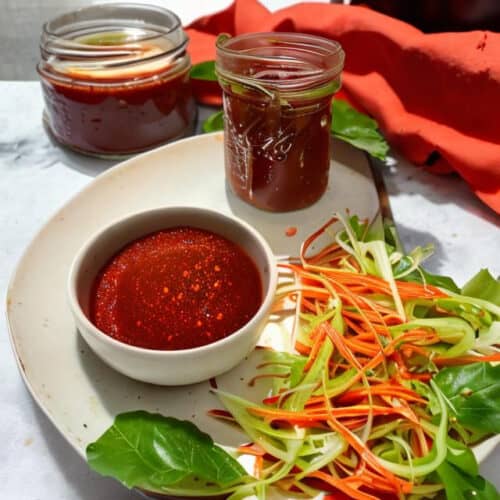
Korean Gochujang Vinaigrette
Ingredients
- 2 tablespoons gochujang
- 1 tablespoon sugar
- 2 tablespoons rice vinegar
- 1 tablespoon olive oil
- 1 tablespoon sesame oil
- 2 tablespoons soy sauce
- 1 clove garlic, minced
- 2 teaspoons roasted sesame seeds
Instructions
- Whisk together all ingredients in a small bowl until smooth.
- Drizzle over salads, stir fries or grilled meats.
- Store covered in the refrigerator for up to 2 weeks.
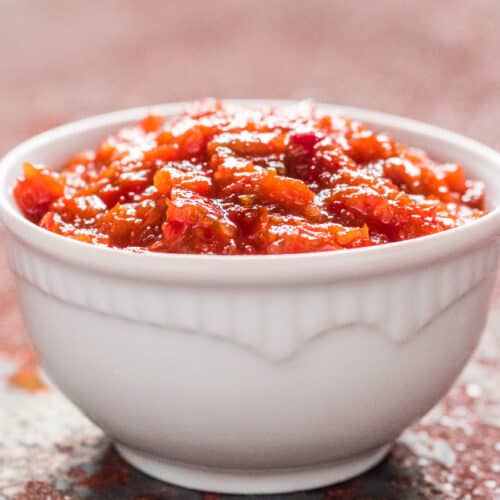
Spicy Gochujang Dressing
Ingredients
- 1/4 cup water
- 1 tablespoon gochujang
- 1 tablespoon gochugaru
- 1 tablespoon maple syrup
- 1/2 teaspoon sea salt
- 1 tablespoon rice vinegar
- 1 tablespoon toasted sesame oil
Instructions
- In a small bowl, whisk together all ingredients until smooth.
- Taste and adjust flavors as needed. Add more gochugaru for extra heat or more maple syrup to balance the heat.
- Store covered in the refrigerator for up to 1 week.
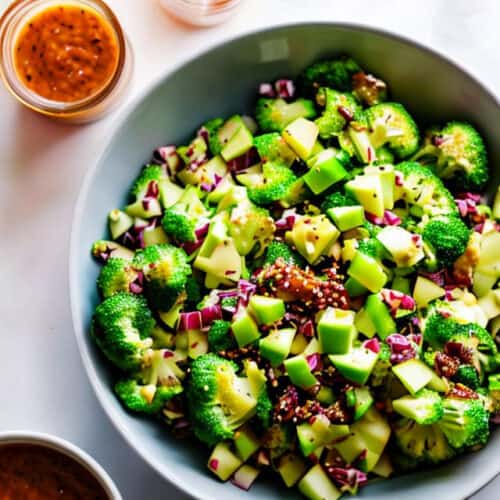
Apple Broccoli Salad with Gochujang Dressing
Ingredients
- 1 head broccoli, chopped
- 1/2 apple, sliced
- 1/2 tablespoon honey
- 3 tablespoons rice vinegar
- 1 1/2 tablespoons gochujang
- 1/2 tablespoon sesame oil
- Assorted nuts (optional)
- Feta cheese (optional)
Instructions
- Make the dressing by whisking together the honey, rice vinegar, gochujang and sesame oil. Set aside.
- In a large bowl, mix the chopped broccoli and apple slices.
- Add the dressing and toss to coat.
- Top with feta cheese and/or nuts if desired. Enjoy as a light meal or side.
Gochujang Marinade Recipes
Gochujang also makes a fantastic marinade for meats, tofu, or tempeh. The fermented chili flavors really shine when the gochujang can soak into proteins.
Balance the sweet and spicy with staples like sesame oil, soy sauce, garlic, and ginger. A gochujang marinade can turn basic chicken breasts, pork chops, or flank steak into something sensational.
Here are some gochujang marinade ideas to try on your favorite proteins:
- Gochujang, soy sauce, sesame oil, honey and minced garlic
- Gochujang, orange juice, rice vinegar, ginger and onion
- Gochujang, tamari, olive oil, toasted sesame seeds and scallions
Marinate proteins for 1-4 hours for the best flavor. Then cook as desired, though grilling or broiling works nicely to caramelize the exterior.
For even more gochujang flavor, reserve some of the marinade to brush on while cooking or to serve alongside as a sauce.
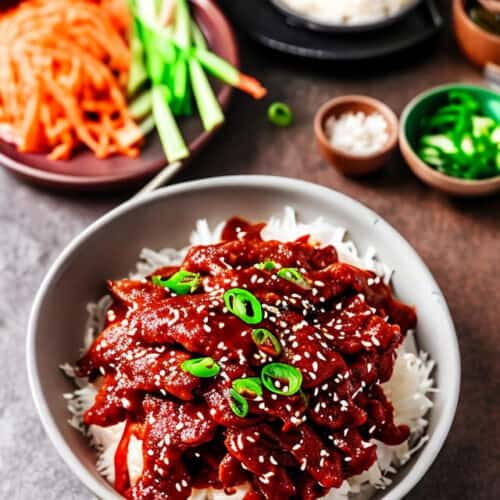
Gochujang Bulgogi
Ingredients
Marinade Ingredients:
- 1/4 cup gochujang
- 3 tablespoons soy sauce
- 3 tablespoons sugar
- 2 tablespoons sesame oil
- 2 tablespoons minced garlic
- 2 tablespoons minced onion
- 1 tablespoon grated ginger
- 1 tablespoon sesame seeds
Bulgogi Ingredients:
- 1 pound ribeye steak, thinly sliced
- Lettuce leaves, for serving
- Cooked rice, for serving
Instructions
- In a large bowl, combine the marinade ingredients and mix well.
- Add the sliced ribeye and stir to coat in the marinade. Cover and refrigerate for 2-4 hours.
- Remove the meat from the marinade, scraping off any chunks. Grill or broil for 2-3 minutes per side until cooked through.
- Serve wrapped in lettuce leaves with rice. Enjoy!
More Gochujang Recipe Ideas
Once you have gochujang in your pantry, you'll want to add its sweet spiciness to all kinds of dishes beyond salads and marinades. Here are more ways to cook with gochujang:
- Stir a spoonful into fried rice or bibimbap
- Mix into meatballs or burgers before cooking
- Use as a glaze or dipping sauce for chicken wings
- Add to a pasta sauce or stir-fry sauce
- Mix with mayo for a spicy sandwich spread
- Add to soups, stews, or chilis
FAQ
How long does homemade gochujang need to ferment?
Traditionally, gochujang was fermented for months or even years in large earthen pots. These days, commercially made gochujang only ferments for a few weeks to achieve the desired sweet, salty, and spicy flavor. When making it at home, plan for a fermentation time of at least 2-4 weeks. The longer it ferments, the more complex the flavors will become.
What's the difference between gochujang and sriracha?
While both are spicy chili sauces, gochujang has a very different flavor profile from sriracha. Gochujang contains fermented soybeans which give it an umami depth, while sriracha gets most of its flavor from raw chilies and vinegar. Sriracha also tends to be thinner in texture compared to the thick, sticky paste of gochujang. In terms of heat level, sriracha is often spicier than many types of gochujang.
What does gochujang taste like?
Gochujang has a very distinctive sweet, salty, and spicy taste. The fermented soybeans lend an umami savoriness. There are also notes of sticky rice and chili peppers. The flavor is complex, savory, and a little funky from the fermentation process. Gochujang often contains traces of the yeast and lactic acid bacteria involved in its fermentation.
Can I substitute sriracha for gochujang?
While their flavor profiles are quite different, in a pinch you can substitute 1 tablespoon of sriracha for 1 tablespoon of gochujang in recipes. Keep in mind sriracha has a thinner consistency and the flavor will be brighter and more vinegary compared to the deeper umami taste of gochujang. For best results, use gochujang but in salsa, stir-fries, or other sauces, sriracha can work if gochujang is unavailable.
What proteins go well with gochujang?
Gochujang is delicious on beef, pork, chicken and seafood. It can be used as a marinade or glaze on chicken wings, ribs, flank steak, or shrimp. Gochujang also pairs well with tofu or tempeh when marinated or tossed into a stir fry. The sweet umami flavor of gochujang complements most proteins nicely. Just adjust the ratio of gochujang to other liquids like soy sauce in your marinade depending on the meat.
Conclusion
Gochujang is the flavorful fermented chili paste that gives Korean food its distinctive sweet, salty, and spicy kick. This versatile condiment can transform your cooking when used in marinades, salad dressings, dipping sauces, and more.
With just a few simple ingredients, you can quickly whip up a gochujang vinaigrette, marinade, or salad dressing. Play with balances of spicy, sweet, and salty flavors to suit your tastes. Use gochujang dressings to instantly elevate leafy salads, cold noodles, stir-fries, grilled meats, and beyond.

